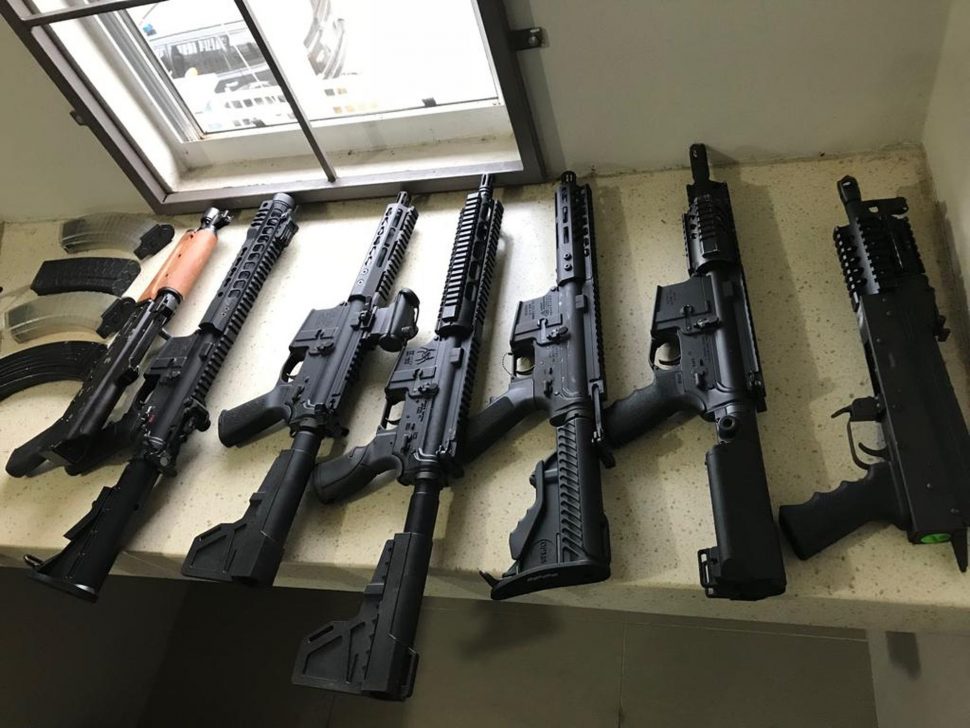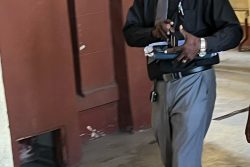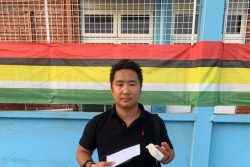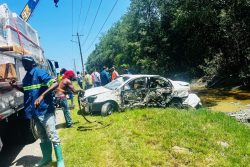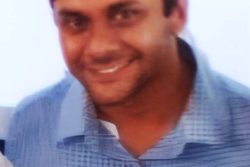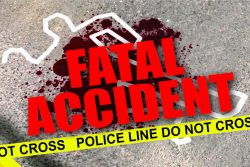(Trinidad Guardian) Criminals are shifting from the use of handguns to commit crimes to more sophisticated military-type rifles.
This from Assistant Commissioner of Police (Anti-Crime) Jayson Forde on Wednesday as he told a Parliament Joint Select Committee on National Security that police were seizing an average of 1,000 illegal firearms annually.
Forde admitted that the rate at which illegal firearms “appear on the streets is something to be concerned about.”
Vice chairman of the Committee Paul Richards told Forde the SSA’s 2016 data showed there were 8,154 illegal firearms in T&T and this figure may be a drop in the bucket. Many of those weapons came in through legal ports of entry, the SSA found.
Forde said the figures of firearms recovered have been far larger compared to previous years.
Of the 8,000 firearms, Richards said 169 were used in crimes.
“If I were to accept this in the context of the seizure rate it suggests that about 7,500 plus illegal firearms are just lurking around T&T and are awaiting unfortunate use. The seizure of 1,000 out of 8,000 does not give me a lot of comfort,” Richards said.
Richards said when he looked at the 2,000 criminal gangs operating in the country, each recruiting an average of 20 members, we were “grossly under-estimating the number of firearms in T&T. The numbers don’t seem to add up to me.”
Richards asked if the same guns are used in multiple homicides.
Forde said every gang member would not possess a firearm but could not say if the same guns were being used in killings.
As for the criminals’ choice of firearms, Forde said it was initially handguns.
“But we are encountering more assault-type firearms,” Forde said
Hinds queried if automatic machine guns were the preferred choice, to which Forde said yes.
“This is ammunition that is common to military warfare between armies,” Hinds responded.
Officials of the T&T Police Service, Customs and Excise Division and Port Authority of T&T appeared before the Committee.
In his opening statement, Hinds said in 2016, the committee commenced an inquiry into the prevalence of illegal firearms circulating on the streets on T&T.
“We at the time remained very disturbed by the data that was supplied to us by the Strategic Services Agency (SSA) of T&T.”
The SSA, he said, gathers intelligence and information to feed different arms of law enforcement.
“They shared with us back in 2016 some pertinent facts which I should remind you of. Illegal firearms on the streets of T&T were estimated by their study to be well over 8,000.”
Hinds said the committee felt the figure was quite conservative “because some of the anecdotal evidence suggests far more than that. The value of the illegal firearms trade they told us was estimated at $100 million annually.”
The SSA found that a small number of firearms were being used in a large number of crimes.
“They (SSA) used the information they got from the Forensic Science Centre,” Hinds said.
He said gun crimes annually “are in the thousands, many of which result in murders. Handguns were then the main weapon of choice.”
Today, Hinds said automatics weapons have become the order of the day.
The guns, the SSA said, came from North and South America and Europe.
“They (SSA) told us that legitimate ports of entry in this country are used to smuggle weapons. Illegal points of entry along the coastline are used to provide some of these weapons via pirogues and fast boats.”
In 2019, Hinds said the Crime and Problem Analysis Branch of the TTPS told the committee as the police continue to seize illegal firearms daily, such confiscation would have little impact “if a serious, concerted and radical effort is not directed at blocking such contraband into the country.”
In 2017, the TTPS confiscated 1,064 illegal firearms while 18,000 rounds of ammunition were seized.
Last year, 16,308 rounds of ammunition were recovered while 988 illegal guns were taken off the streets.
For this year, 124 guns were retrieved, the committee heard.
Committee member Nigel De Freitas said the data suggests that illegal guns were coming in large caches.
